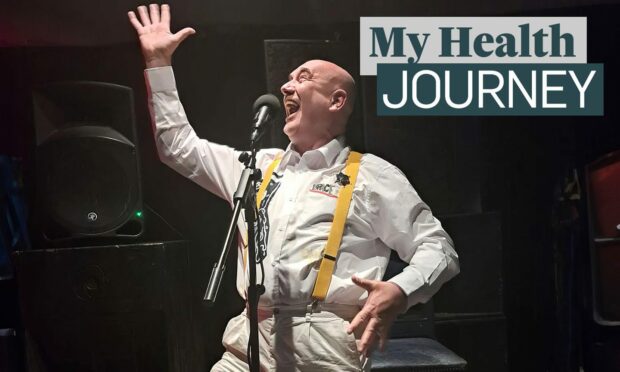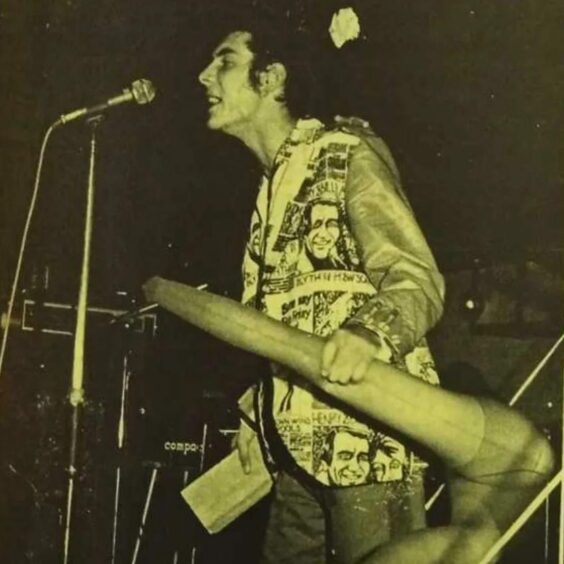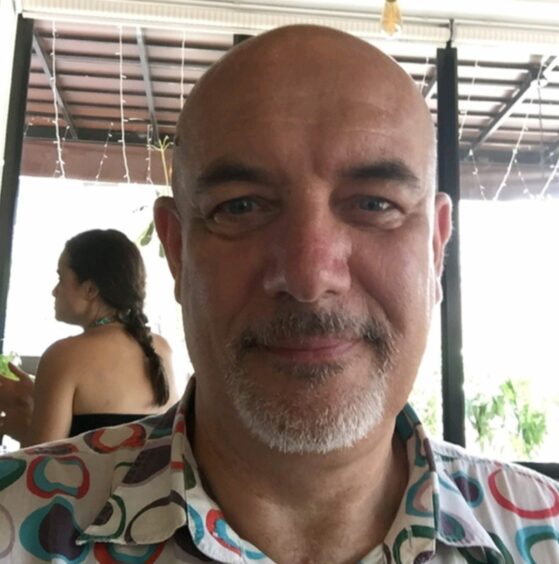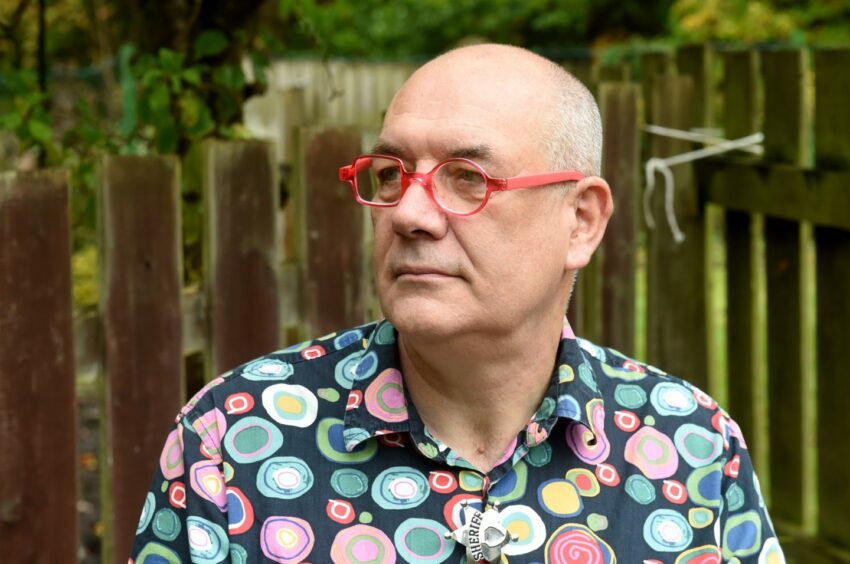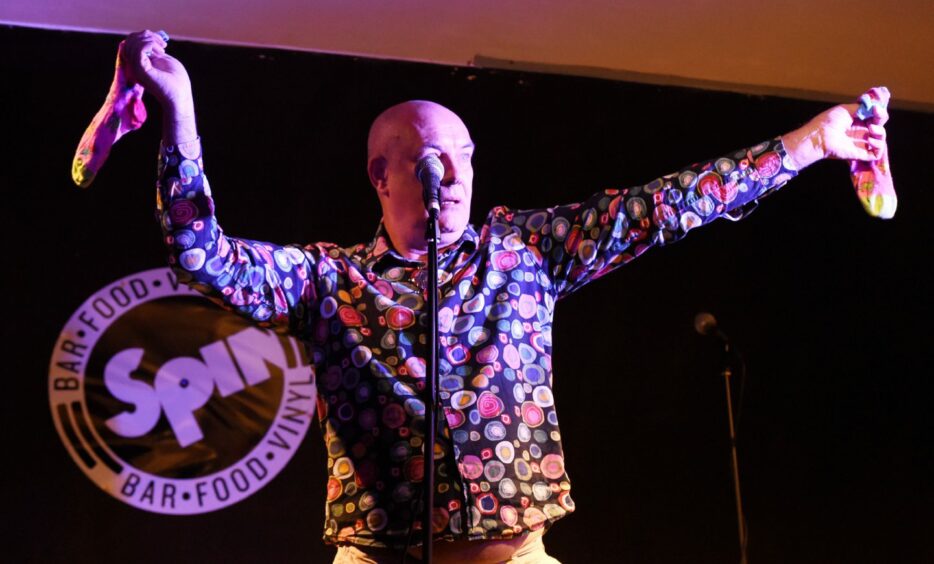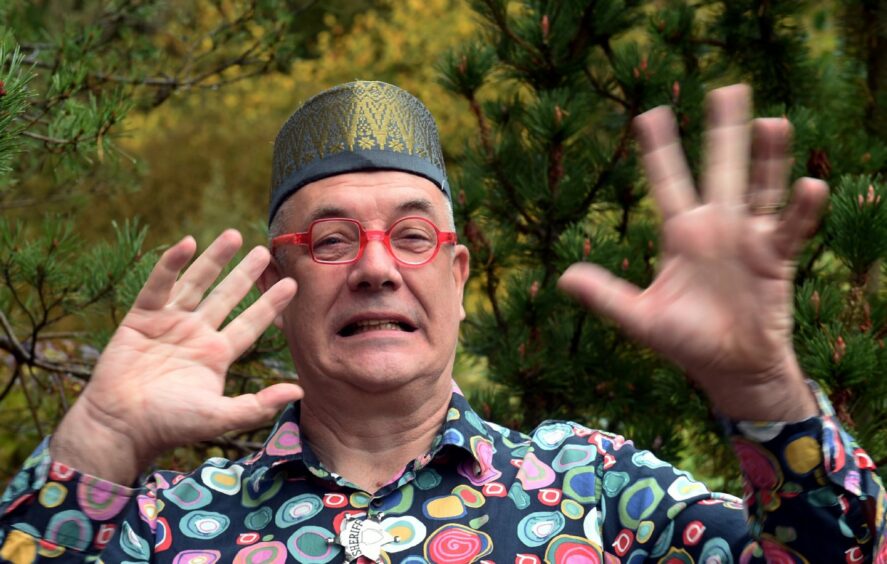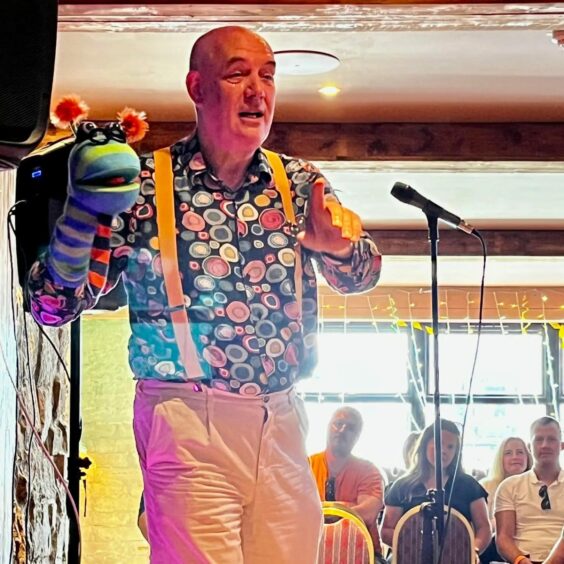Sid Ozalid’s explanation of how he got his stage name comes with a warning.
“It’s a very boring story,” says the 63-year-old comedian, real name Douglas Cairns.
That, however, is not true.
It’s a good story; one about a guy Sid used to know that worked for an Aberdeen print works firm called Ozalid.
But then, nothing about Sid’s life is boring.
Take, for example, the 44 gigs he’s held this year to raise money for Dyce’s Multiple Sclerosis Therapy Center – the 45th, and final one, is on Friday night at Spin in Aberdeen.
Then there are his early days as a comic when Ade Edmondson and Rik Mayall came to see him him perform at the Edinburgh Fringe in 1982.
Or his years as ‘Scotland’s top dyslexic poet’ when he opened for bands including The Clash, Simple Minds and The Specials.
Along the way, he’s appeared on the Northsound show Invisible Radio, been a regular guest on Tom Morton’s BBC Scotland show and, as part of another radio show, run down the royal mile dressed only in a sock (which wasn’t on either of his feet).
And then there is THE story, the one about the incident that has defined Sid’s life for the past six years.
And that’s the story about how, at the age of 57 while working in Asia, he bonked his head doing a star jump out of a car and gave himself a brain injury that almost made him forget who he was.
How everything stopped for Sid Ozalid
Sid was coming back to his home in Brunei, the tiny kingdom on the island of Borneo in the South China Sea.
He’d worked in oil and gas since he was 16 to supplement his showbiz income, and now was head of personal safety for Shell (Sid is well aware of the irony of his job title considering what happened to him).
Parking in his driveway after two weeks away from his family in Australia, he saw his sons looking out a window so decided to star jump out of the car.
However, a friend had borrowed his car while away and changed the height of the driver’s seat. Sid misjudged the leap and cracked his head against the door frame.
He didn’t know it then, but the thump had compressed his neck and damaged his brain.
At first, the injury didn’t appear to be very serious. Sid got dizzy and had to sit down.
Three weeks later, however, he collapsed. Stroke-like symptoms emerged and he couldn’t walk or talk properly. His left side wouldn’t do what it was told.
Unable to work, Sid returned with his wife and children to the north-east. His life as he knew it had come to a sudden end.
“Everything I was doing, it just stopped,” says the father of five. “I couldn’t do it anymore.”
‘I realised I had all these moments of fun in my head’
But there was something Sid could still do.
It may sound strange, but though he had trouble answering simple questions (“I knew the answer, but couldn’t get it out,” he says) he could still tap into his silly side.
The person that had run down the royal mile with a sock on his nethers, the boisterous Northsound DJ, the colourful comic with the surreal poems – he was inside waiting to get out.
“I realised I had all these moments of fun in my head,” Sid explains. “I thought, if I tap into that, and build on that, that’s going to help me in my recovery.”
He returned to the spoken word and found the repetition of reading out his old poems helped his damaged brain. Soon, Sid was back doing gigs.
It wasn’t easy – at his first gig in 2019 his wife had to help him on to the stage because he still couldn’t walk properly.
But the reaction he got from the audience – he read two poems from his own book – was all the motivation he needed.
“People clapped,” he recalls. “I was overwhelmed but also quite dizzy because it was too much data for my brain to take in.”
A return to the Edinburgh Fringe, and to life
From then on, Sid’s recovery picked up pace. He made himself memorise all his old poems, then started writing new ones.
With each step he discovered he could do more, and the more he did the more he could stretch his damaged brain.
He got back into gigging, appearing at the Aberdeen comedy festival and making a return to the Edinburgh Fringe.
Being on stage gave him a focus, and a routine.
“The structure has been great in my recovery because I wouldn’t know what I was doing, I wouldn’t know what day it was,” he says.
“I would leave the house to go somewhere and have no idea why I’d left the house. I’d have to come back and ask, and leave with a note so I’d know what I was doing.”
The healing power of silliness for Sid Ozalid
But perhaps Sid’s greatest discovery has been his connection with children.
The comic started playing school assemblies and other children’s venues and found that his self-styled silly routines had a special resonance with the young, especially those with special needs.
Sid puts it down to his own struggles as a child, when his severe dyslexia made school a constant challenge.
“Back then, it wasn’t called dyslexia, it was called thick-as-s**txia,” he says of his schooldays in the 1970s.
“Overcoming that struggle in my life somehow seems to touch people who maybe struggle themselves and can’t quite fit in.
“By me being silly, and there being a freedom to be silly, that allows them to express themselves.”
Why Sid’s brain is like an old Nokia phone
Sid says the best measure of his recovery is that people no longer notice it.
People used to tell him he looked so much better, which for Sid just meant that before he must have looked really bad.
He puts some of the gains down to a hyperbaric chamber in Dyce he regularly uses.
These oxygen chambers are used by a wide range of people with brain conditions including stroke victims and people with multiple sclerosis, and Sid says it has helped him enormously.
He likens his brain to an old Nokia phone that you charge for 12 hours for just one hour of use – you need to think carefully about how you’re going to use those 60 minutes.
“Going into the oxygen tank, suddenly I was fully charged for a day,” he explains. “And that was amazing.”
Why laughter has been the best medicine for the Aberdeen comedian
His charity gig on Friday, and the 44 that went before, is his way of saying thank you to the MS Centre that runs the hyperbaric chamber, and to help others struggling with brain injuries.
And if at the same time it continues Sid’s own recovery, then all the better.
“I feel safe on stage, because I’m given permission to be myself,” Sid explains. “I just get allowed to be silly. It’s very similar to me being a young boy, getting to go along to children’s theater and express myself.
“When I’m on the stage I get to be me.”
To buy tickets for Sid’s 45th gig, in Spin Bar and Diner on 10 Littlejohn Street, Aberdeen, on Friday September 29, visit eventbrite.co.uk All proceeds go to the Grampian Multiple Sclerosis Therapy Center.
